The TRAPPIST-1 planetary system consists of a red dwarf and seven planets orbiting it. Three of them could theoretically be suitable for life. This article is the first in a serieswhere we will talk about what is now known about the planets of this unusual system.
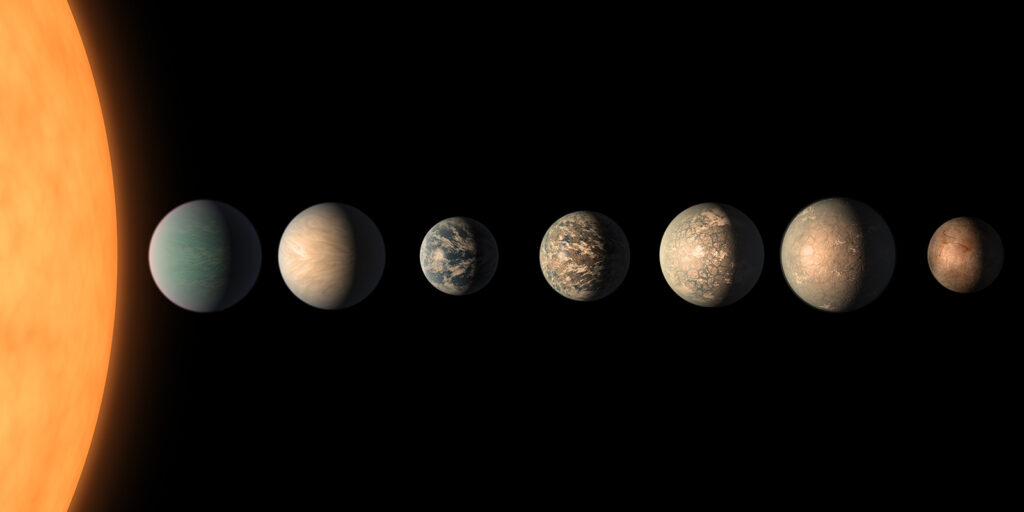
The star TRAPPIST-1
In 2016, the discovery of the TRAPPIST-1 system caused a real sensation. As many as seven planets, whose masses are commensurate with that of Earth. And at least three of them are in the “habitable zone”, where the temperature regime allows liquid water to exist on the surface. This immediately makes them among the best candidates for the search for extraterrestrial life. Since then, the system has been somewhat forgotten, but it deserves to be described in detail.
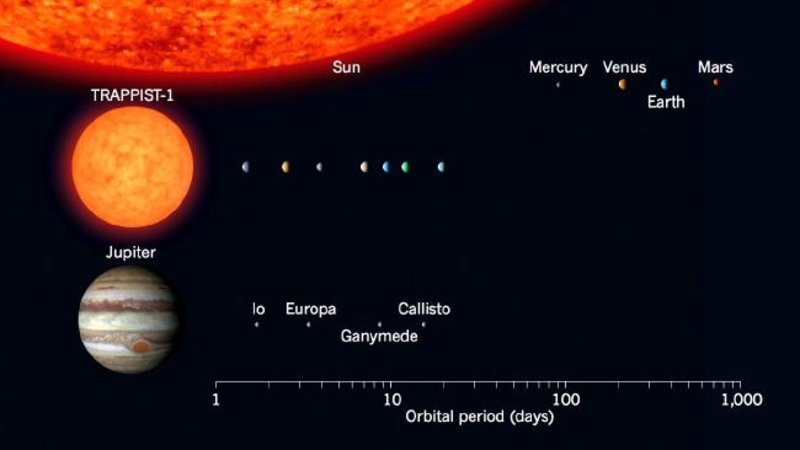
First of all, we should mention the TRAPPIST-1 star itself. People knew about its existence before the discovery of the planets. Until 2016, it was known as 2MASS J23062928-0502285. This designation was assigned to this object during an infrared survey of the sky at a wavelength of 2 μm in 1997-2001. It got its current name from TRAPPIST telescope of the La Silla Observatory, with which its planetary system was discovered.
TRAPPIST-1 is a very small and faint red dwarf located 40.7 light-years away in the direction of the Aquarius constellation. That’s almost 10 times farther than α Centauri, but it’s still one of the 50 closest stars to us that have planets.
The star’s radius is only 8% of the sun’s, that is, it is slightly larger than Jupiter. However, its mass is as much as 12.1% of the mass of our star, so it is 84 times more massive than the largest of the planets in our system.
At the same time, compared to the Sun, TRAPPIST-1 is very cold. Its surface temperature is only 2560°C. Unlike many red dwarfs, which experience catastrophic flashes, this star is relatively calm. It is believed that its age reaches 7 billion years, however, unlike luminaries of the solar mass, such babies can shine for trillions of years.
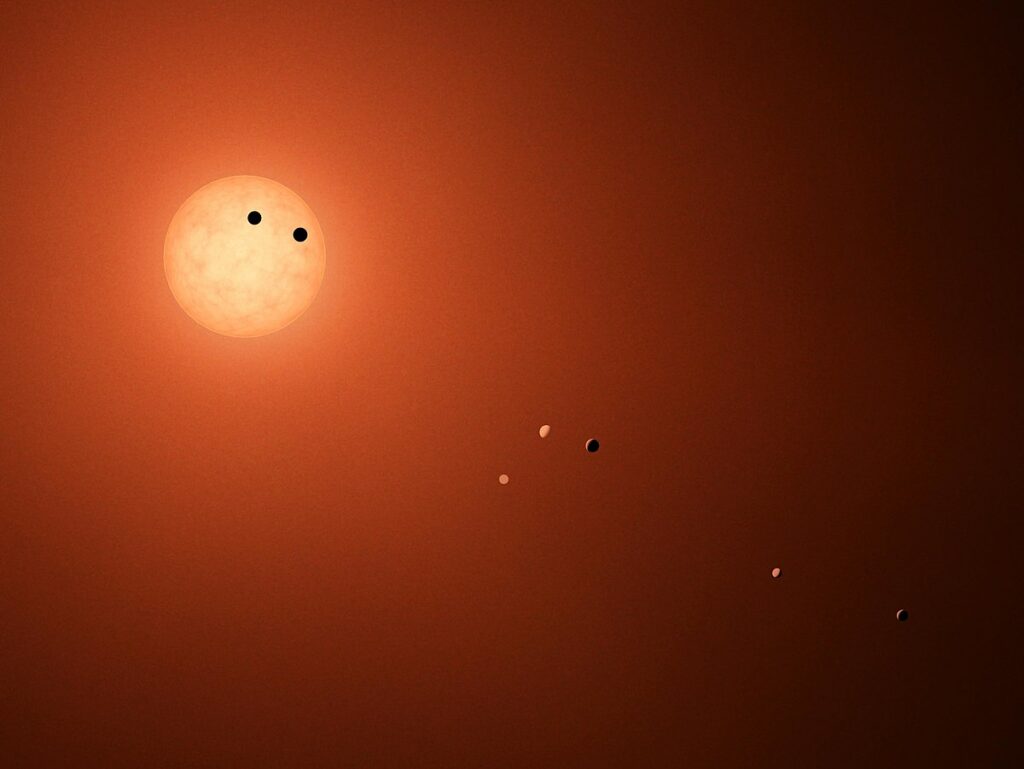
The red-hot inferno of TRAPPIST-1b
TRAPPIST-1b, the planet closest to the red dwarf, revolves around it in an almost circular orbit, making one revolution in just 36 hours. The distance from it to the star is only 1.7 million km. That is, the distance between them is less than between Callisto and Jupiter.
According to the latest data, TRAPPIST-1b has a radius 12% larger than Earth’s. However, its mass is practically the same as that of our planet. It is believed that the reason for this is a massive atmosphere, much denser not only than Earth’s, but also than Venus’s. Because of this, the temperature on the planet is much higher than the 118°C to which the star could heat it.
There are two main assumptions about the composition of the atmosphere of this planet. The first of them is that it consists of carbon dioxide. Then the temperature there can reach 1180°C. According to the second, the atmosphere of TRAPPIST-1b mainly consists of water vapor — then its temperature can reach 1500°C. As for now scientists are more inclined to the first option.
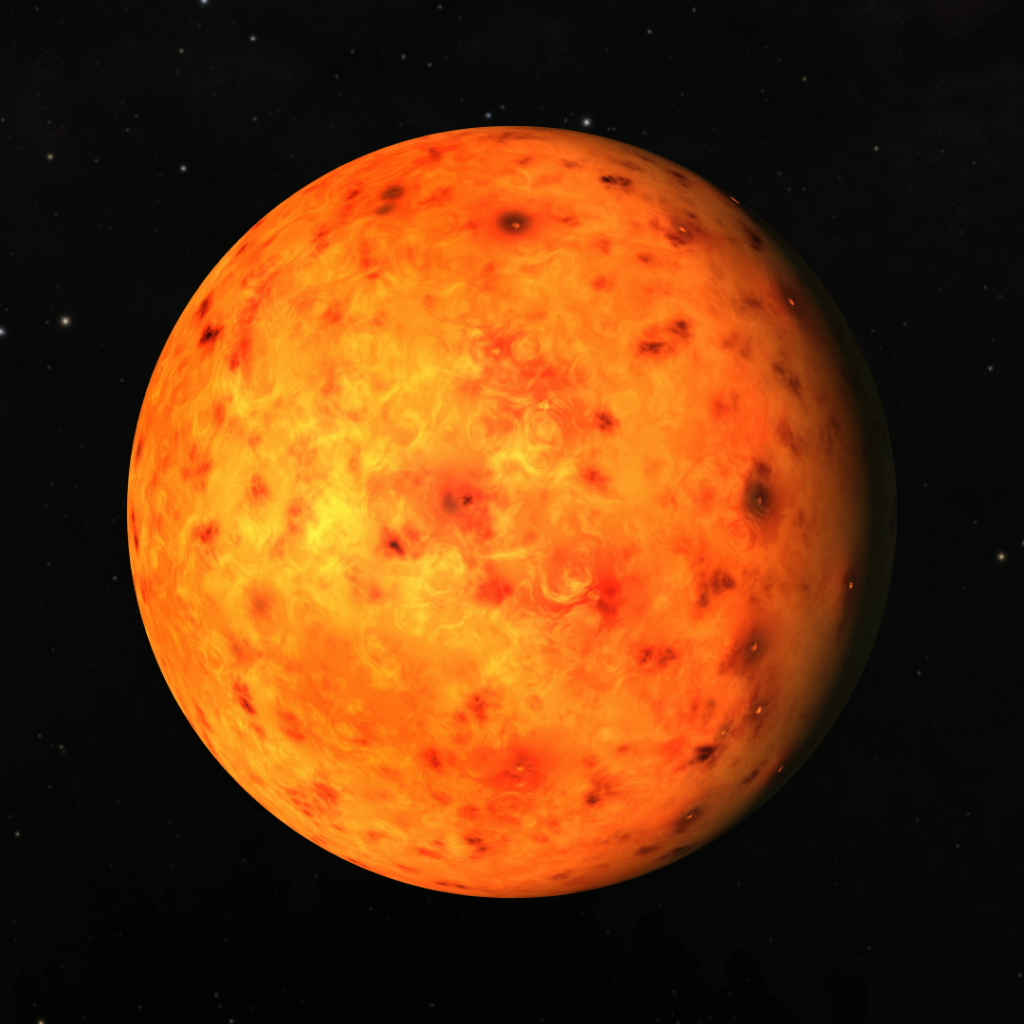
In any case, at these temperatures, many rocks are already in a molten state. In addition, the tidal forces of the star inhibit the rotation of its satellite, and it is always turned towards it with the same side.
“Super-Venus” TRAPPIST-1c
The second planet of the system — TRAPPIST-1c — orbits at a distance of only 2.37 million km from the central star. One revolution lasts 58 hours. The orbit of this body has approximately the same eccentricity as the Earth’s.
TRAPPIST-1c is the heaviest, but not the largest, planet in the system. Its mass is 15.6% greater than Earth’s, and its radius is 9.5% greater. This object receives about twice as much radiation from its star, as our home world.
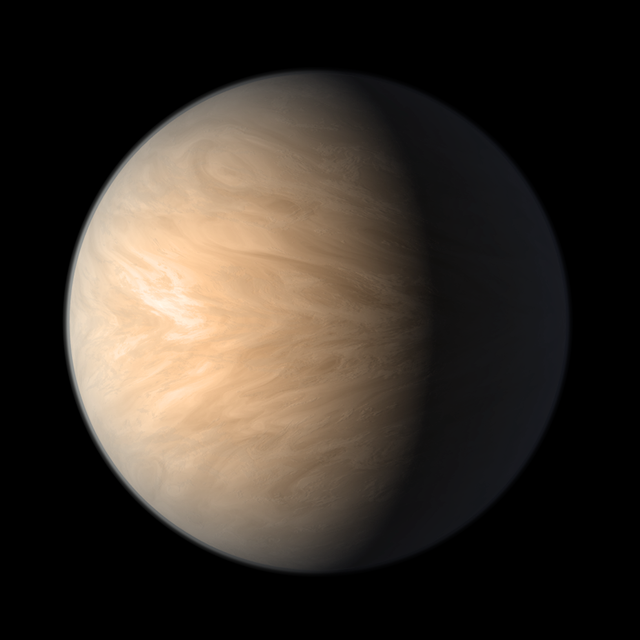
A 2018 study showed that TRAPPIST-1c’s atmosphere is rich in hydrogen, but its detailed composition is unknown. In any case, it is very reminiscent of Venus, although not as dense as the first planet of the system.
In general, TRAPPIST-1c can be called a “Super-Venus “. Although a red dwarf can only heat it up to 61°C, in reality the surface temperature may be several hundreds of degrees. In addition, due to synchronous rotation, the planet is always turned to the star with one side. Life similar to that on Earth would not survive there.
